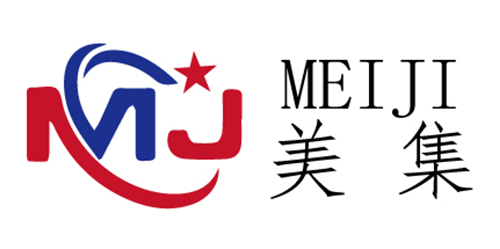29
October
How to Identify Quality Cut-Resistant Gloves & Decode EN388 Standards
January 01, 1970
Expert Guidance from Qingdao Meiji Labor Products Co., Ltd
Why EN388 Certification Matters in Cut Protection
With workplace hand injuries remaining a significant concern globally, understanding glove standards has never been more critical. At Qingdao Meiji Labor Products Co., Ltd, we believe that informed choices save hands and lives. This comprehensive guide will help you identify quality cut-resistant gloves and properly interpret the EN388 certification.
1. Key Characteristics of Quality Cut-Resistant Gloves
Material Excellence:
✔ High-Performance Fibers: Look for gloves incorporating Dyneema®, Kevlar®, or stainless steel fibers
✔ Balanced Construction: Optimal blend of protection and flexibility
✔ Reinforced Stress Points: Extra protection in high-wear areas like palms and fingertips
Comfort and Durability:
* Ergonomic Design: Pre-curved fingers for natural hand position
* Breathable Materials: Moisture-wicking properties for extended wear
* Consistent Performance: Maintains protection level through glove's lifespan
2. Comprehensive Guide to EN388 Standard
Understanding the EN388:2016 Rating System:
The EN388 certification provides a 6-digit rating representing performance in different tests:
| Position | Test Parameter | Rating Levels | Meaning |
| 1st Digit | Abrasion Resistance | 1-4 | Number of cycles until hole appears |
| 2nd Digit | Blade Cut Resistance | 1-5 | Circular blade test (higher = better) |
| 3rd Digit | Tear Resistance | 1-4 | Force required to tear material |
| 4th Digit | Puncture Resistance | 1-4 | Force needed to puncture material |
| 5th Digit | NEW: Impact Protection | P (Pass) | Optional impact test |
| 6th Digit | NEW: TDM Cut Test | A-F | Tomodynamic cutter test (A=low, F=high) |
Breaking Down the Ratings:
Abrasion Resistance (1-4):
* Level 1: 100 cycles
* Level 4: 8,000 cycles
Blade Cut Resistance (1-5):
* Level 1: Index 1.2-2.5
* Level 5: Index 20.0+
New TDM Cut Test (A-F):
* A (Lowest): 2-4.9N
* F (Highest): 30-39.9N
3. How to Read EN388 Labels Like an Expert
Sample Label Interpretation:
EN388 4541 P B means:
* 4: Abrasion resistance (8,000 cycles)
* 5: Blade cut resistance (highest traditional rating)
* 4: Tear resistance (75N force)
* 1: Puncture resistance (10-20N)
* P: Impact protection (pass)
* B: TDM cut test (5-9.9N)
4. Industry-Specific EN388 Requirements
Food Processing:
* Recommended: 3-1-3-1 B or higher
* Focus: Balance between protection and hygiene requirements
Metal Working:
* Recommended: 4-4-3-2 C or higher
* Focus: High cut resistance with good dexterity
Glass Handling:
* Recommended: 3-5-2-2 D or higher
* Focus: Maximum cut protection
Construction:
* Recommended: 4-3-4-2 P C
* Focus: All-around protection including impact
5. Beyond EN388: Additional Quality Indicators
Material Composition:
* HPPE (Dyneema): Excellent cut resistance, lightweight
* Aramid (Kevlar): Good heat and cut resistance
* Steel Mesh: Maximum protection but reduced flexibility
* Fiber Blends: Optimal balance of properties
Construction Quality:
* Seamless Knitting: Reduces weak points
* Reinforced Palms: Extra protection where needed
* Ergonomic Stitching: Follows natural hand contours
6. Common Misconceptions About Cut Resistance
❌ "Higher Level Always Better" - Not if it sacrifices needed dexterity
❌ "All Level 5 Gloves Are Equal" - Manufacturing quality varies significantly
❌ "Cut Resistance Never Degrades" - Protection decreases with wear and washing
❌ "One Glove Fits All Applications" - Different tasks require different protection levels
7. Qingdao Meiji's EN388-Certified Series
Professional Series:
* EN388 Rating: 4-5-3-2 D
* Applications: Metal working, glass handling
* Features: Stainless steel fiber blend, breathable back
Comfort Series:
* EN388 Rating: 3-4-3-1 B
* Applications: Assembly work, light manufacturing
* Features: HPPE construction, maximum flexibility
Industrial Series:
* EN388 Rating: 4-4-4-2 P C
* Applications: Construction, heavy industry
* Features: Combined cut and impact protection
8. Your Glove Selection Checklist
1.Identify Primary Hazards
* Sharpness of materials handled
* Force of potential contact
2.Check EN388 Certification
* Verify all six performance digits
* Ensure certification is current
3.Evaluate Comfort Features
* Proper sizing availability
* Breathability and moisture management
4.Consider Additional Needs
* Grip requirements
* Temperature considerations
* Chemical exposure
Get Your Certified Protection Today!
* Call: [0086-15020088730]
* Visit: www.meijigloves.com
* Email: info@meijigloves.com
Conclusion: Knowledge is Your Best Protection
Understanding EN388 standards and quality indicators ensures you choose gloves that truly protect. With Qingdao Meiji Labor Products Co., Ltd, you get certified quality, transparent information, and expert support for all your hand protection needs.
Choose Knowledge. Choose Quality. Choose Safety.



